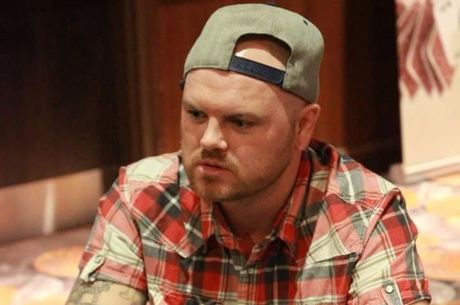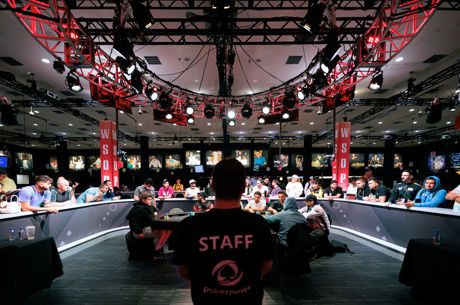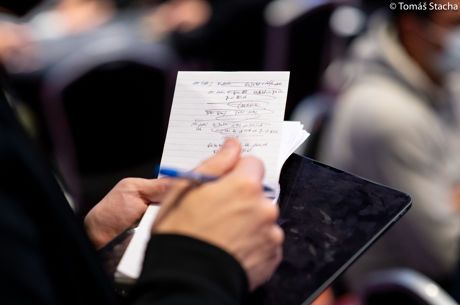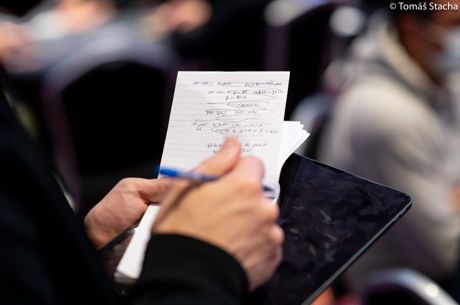A Poker Code of Conduct: Lessons from Tennis
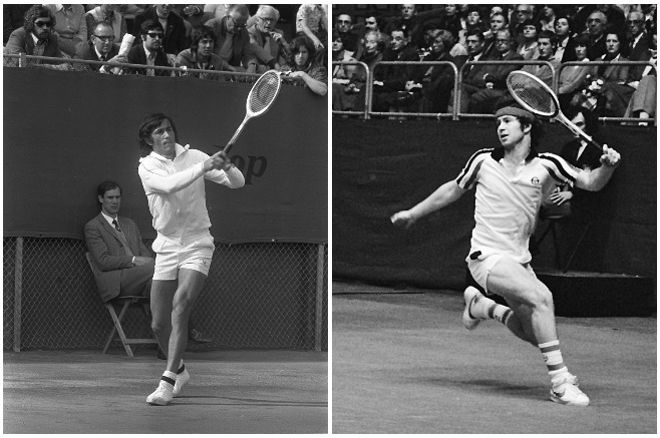
With the WSOP less than a month away, I have recently been thinking about last year's Main Event and how a couple of controversies tested the formal (and informal) rules of poker.
There was the incident with the push/fold chart being used in the middle of a hand, and, most famously, there was the William Kassouf saga. I'm going to focus this article on the latter.
Like so many other poker fans throughout the world, I intently watched the drama unfold at the 2016 WSOP Main Event. In my 10+ years of playing this game and countless WSOP circuit events, I thought I had seen it all...until I saw William Kassouf's antics at the televised tables.
I thought I had seen it all...until I saw William Kassouf's antics at the televised tables.
I read several articles about the situation, and it seemed like the poker community was 50/50 split on the issue: Half of poker seemed to think that Kassouf had done nothing wrong, had acted within his rights, and had been treated unfairly; the other half sided with the tournament director believing that Kassouf had crossed a line with his "speech play" and tanking and had been justifiably issued a one-round penalty as a result.
With that in mind, I would like to offer a fresh new perspective on this issue that probably hasn't been offered yet - and it involves comparing poker to another relatively nascent, individual sport that has offered up several memorable characters (and mind games) of its own through the years: tennis.
Many people may not realize that tennis, at the professional level, is a relatively new sport: Professionals have only been allowed to compete in established tournaments since 1968. Hence, in the 1970s, it was still a fledgling sport that offered up comparatively little prize money and a (sometimes) ambiguous set of rules that had yet to be tested. Its first televised superstars started showing up in the mid '70s: Connors, Evert, and Borg.
By this time, there was also another top player that was known to steal the spotlight: Ilie Nastase. He had earned the nickname, "Nasty," for his numerous on-court antics that tested the limits of sportsmanship: swearing in six different languages, taunting opponents, stalling and even threatening fans and umpires.
He was tennis's original bad boy, and these situations happened so often and to such a degree that tennis's governing body eventually got together and established an official Code of Conduct in 1976 to temper the increasingly bad behavior of players like Nastase.
The problem with this Code of Conduct was that it was merely tennis's first attempt at regulating the behavior of its players. Essentially, it was a four-strikes-and-you-are-out policy (warning, point penalty, game penalty, disqualification) that was often loosely enforced - especially in the case of high-profile players, like Nastase, who could draw a huge crowd and, thus, bring more visibility - and money - to the sport.
Shit finally hit the fan on a September night in New York City in 1979 in the second round of the U.S. Open.
Bad behavior that would never be tolerated in today's game was overlooked on many an occasion. Furthermore, with four strikes, a disruptive player could still unfairly cause substantial damage to the integrity of a match with relatively minor consequences. However, shit finally hit the fan on a September night in New York City in 1979 in the second round of the U.S. Open.
On that fateful night, Nastase, who was in the twilight of his career, was up against a young American upstart who had just turned pro a year earlier: John McEnroe. McEnroe was crushing the crowd favorite and Nastase eventually responded by using every trick in the book to try to throw the less-experienced youngster off: swearing, excessive stalling, arguing with the chair umpire (Frank Hammond), taunting McEnroe, and even tipping the net judge's hat.
Yes, on this night, John McEnroe was actually THE VICTIM of bad behavior! Incrementally, the chair umpire began to enforce the Code of Conduct until Nastase had been given a game penalty and was down to his last strike. And with every successive violation, the raucous NYC night crowd (many of whom were undoubtedly drunk by this time) began to shout and boo to such a degree that the match became unplayable and was halted.
With play suspended, the tournament referee, Mike Blanchard, stepped onto the court and addressed the crowd to quiet down so that the match could resume. The situation got out-of-control: Random spectators walked onto the court to offer their solutions to the dilemma with no clear authority, fans threw cans onto the court, and eventually riot police converged onto the court. The tournament referee and chair umpire finally instructed Nastase to continue playing - despite the unruly crowd.
Nastase, sensing the building chaos around him was becoming his saving grace, refused and stalled yet again - knowing full-well that he had the 10,000+ crowd on his side. The chair umpire basically begged Nastase to continue. Again, he refused. The chair umpire was left with no choice but to default him after the 30-second clock had expired.
And when that finally happened, a riot nearly broke out. Then, inexplicably, the tournament director REVERSED the umpire's decision to default Nastase! In utterly humiliating fashion, the portly Frank Hammond was forced to clumsily leave his chair as Blanchard took over. The crowd cheered as it realized it had effectively saved Nastase (for the moment, anyway).
"This is what you get when your sport grows, prize money grows," one of the commentators noted.
Play resumed...and Nastase promptly lost the match a few games later. McEnroe went on to win that U.S. Open - his first Grand Slam and the start of his legend. Watch the entire saga here.
The tournament director had chosen to pander to the crowd instead of supporting his most reliable official. This is what happens when tournament officials DO NOT enforce the rules: total, utter chaos. The match ultimately meant very little for Ilie Nastase; his glory days were over and he only had a few years left in him (however, nearly 40 years later, it seems he STILL hasn't grown up; this latest saga occurred just two weeks ago!).
But, sadly, it destroyed Frank Hammond's career. Once regarded as the "players' umpire" and most reliable umpire in the game, he had been humiliated in front of the whole world and, thus, lost his legitimacy as an authority on the court. But, ironically, it was also a watershed match for the victim.
"Where do you think I learned it from," McEnroe quips towards the end of that video commentary, "...it unleashed a lion...Wait a second, I can do that, too!"
In essence, by NOT enforcing the rules to the letter, the tournament director, that night, created the John McEnroe that the world would either love or hate for the next decade. He had learned a valuable lesson that night - that brinksmanship works - and would become the master at it - using it throughout his career (some would argue as an effective psychological weapon to derail his opponents) with little resistance.
He took it one step too far at the 1990 Australian Open and got disqualified (presumably because he was unaware that the Code of Conduct had curtailed its four-strikes-and-you-are-out policy to three strikes just a few weeks prior).
I hope every poker player can see the astounding parallels between that match and the 2016 Main Event, and the parallels between poker and tennis. Although poker and tennis originated at two opposite ends of the moral spectrum (Tennis had traditionally been considered a "gentlemen's game" while poker had been popularized by well-known cheats and swindlers.), they have essentially converged.
Today, in my opinion, the difference between the way these two individual - and highly psychological - sports are governed boils down to a difference in maturity; tennis has been mainstream slightly longer than poker (you can argue that poker essentially became mainstream in 2003, when Chris Moneymaker took down the WSOP Main Event).
Like tennis, poker has been evolving since and there is a considerable "gray area" on the margins of its written rules that has yet to be tested. Angle-shooting does occur and the remedy isn't always obvious. And so, I believe, poker can take some valuable lessons from the evolution of tennis.
I see the state of 1970s tennis as being roughly equivalent to the state of poker over the last decade or so. The unsportsmanlike antics of Phil Hellmuth and some of the other top pros (Will Kassouf) are, in many ways, comparable to the crowd-pleasing antics of Nastase in the "Golden Age" of tennis; as long as they are high-profile names that draw crowds to the game, the governing bodies will be inclined to overlook Code of Conduct violations for the sake of publicity and just let them be.
I see the state of 1970s tennis as being roughly equivalent to the state of poker over the last decade or so.
They want high visibility for the game, so they will be inclined to tolerate certain actions as long as these actions garner attention from the mainstream media without compromising the integrity of the game. The problem is that, eventually, shit hits the fan where fundamental rules get tested along with the integrity of the game.
The interests of the players get pitted against the interests of the media/spectators (and potential future players). There is a large gray area in the game that will eventually solidify into a thin, unequivocal line; it is the nature of an evolving game/sport that explodes in mainstream popularity. Poker will, eventually, have to choose whose interests are more important.
I believe that the 2016 WSOP Main Event was, for poker, the 1979 U.S. Open between McEnroe and Nastase. Yes, Kassouf was nowhere near the celebrity that Nastase was back then, but his brinksmanship was strikingly similar (especially the tanking/stalling).
Things got out of control in a relatively fledgling game with a still-unrefined Code of Conduct with many gray areas that was suddenly put to the test. It was a growing pain. The difference was that poker chose to side with the players and the integrity of the game rather than pander to the spectators and the media - and it was the right move.
Poker chose to side with the players and the integrity of the game rather than pander to the spectators and the media - and it was the right move.
In my humble opinion, poker needs to adopt the three-strikes-and-you-are-out policy of tennis (perhaps warning, one round penalty, disqualification) so as to avoid similar situations in the future - and enforce them, equally, to ALL players - regardless of name and popular appeal.
If that means having to disqualify a high-profile player for the integrity of the game and the Code of Conduct (like the ATP did with McEnroe at the 1990 Australian Open) to prove a point, then so be it; the rest of the poker world will only respect the Code more as a result. As a player, I have witnessed and been a part of many uncomfortable situations on the tables through the years - situations that no human being should have to face and that, ultimately, accomplish nothing but to demonstrate that there are some REAL scumbags playing this game.
And while such situations undoubtedly provide for great entertainment to the spectators, they can be a nightmare - and deterrent - to the other players who unfairly suffer as a result. No sane individual should have to tolerate what John McEnroe (and the poor net judge) tolerated with Nastase back in 1979.
No sane individual should have to tolerate what Aaron Krickstein was forced to face when he played Jimmy Connors in the 1991 U.S. Open (another example of things getting out-of-control in a high-profile tennis match).
No sane individual should have to tolerate what the players at Will Kassouf's table had to tolerate at last year's WSOP Main Event. Not enforcing the Code of Conduct is a slippery slope and could result in some ironic and unforeseen situations in the future - namely a John McEnroe in the poker world.
Two offenses should be plenty for a misbehaving player to strongly consider the extreme ramifications of a third violation. It will keep things under control as nobody wants to lose their money as a result of a default due to Code of Conduct violations. With the much more refined and stringent Code of Conduct in tennis today, misbehavior at the professional level has become a rarity. It can be the same way in poker.
Misbehavior at the professional level has become a rarity. It can be the same way in poker.
That is, of course, unless poker wants to stay in the Twilight Zone that tennis was in the '70s, a time when fans focused just as much - if not more - on the personalities of its players rather than on their actual skills.
You can make the argument either way and that's really up to the poker community. Some people yearn to see characters on the professional tennis circuit like the Connors, Nastase, and McEnroe of old; others think it should've always been about the tennis, like Sampras, Nadal, Federer and seemingly every other (recent) top pro demonstrate these days.
However, it is important to keep in mind that there would be no spectators if there were no opponents. Eventually, a solid, unequivocal line must be drawn - and enforced - if this game is to maintain its growth and public image.
Lead images courtesy of the Nationaal Archief Fotocollectie Anefo (photos have been edited and combined).
This article was written by one of our community members as part of the PN Blog. The thoughts, opinions, and strategy are those of the user only and do not necessarily reflect the positions of PokerNews. We appreciate your feedback, but ask that you be respectful of our PN Blog users who have generously donated their time. You can learn more about the PN Blog here.

